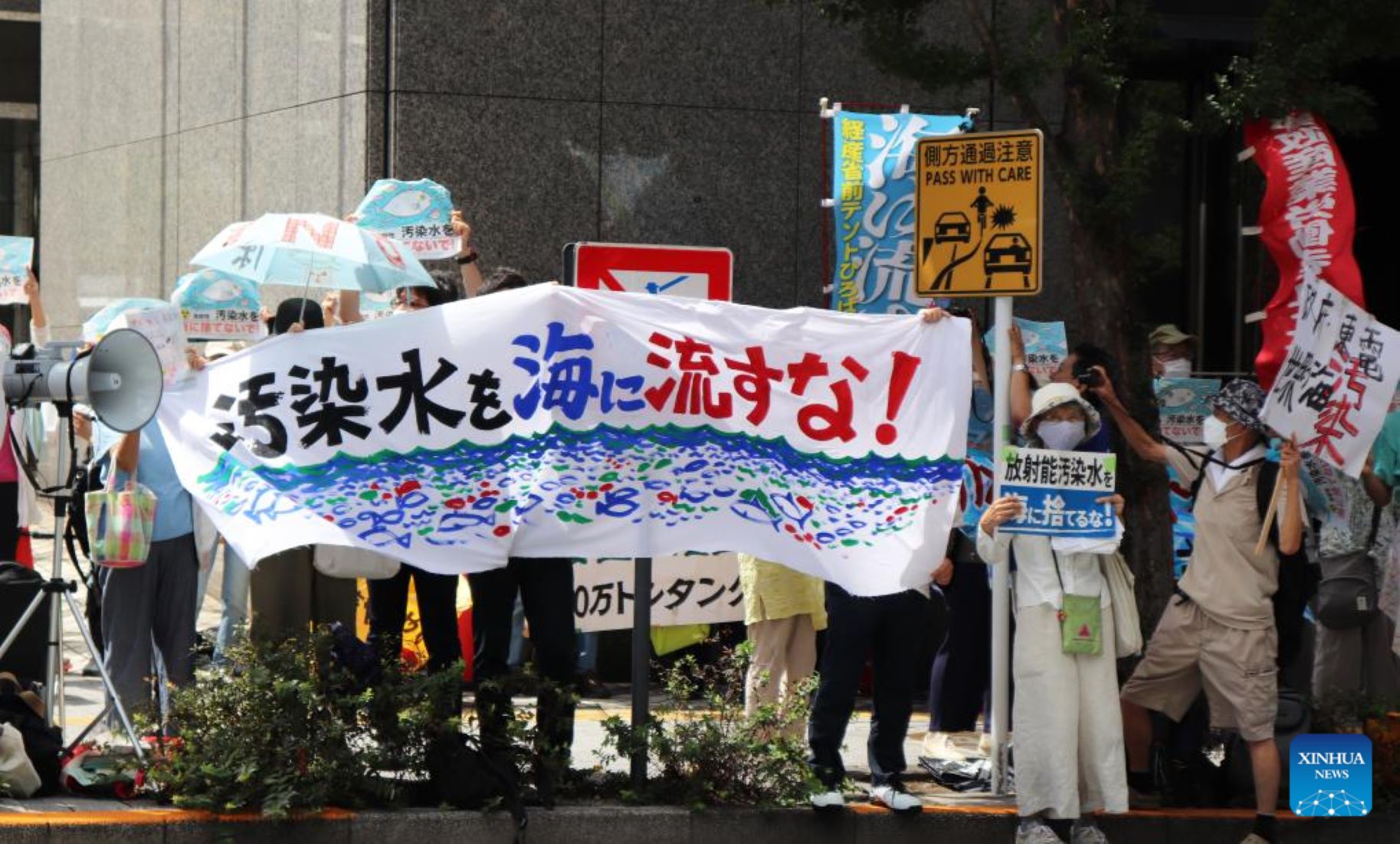TOKYO, Aug 25 (NNN-NHK) – Japan started releasing nuclear-contaminated wastewater from the crippled Fukushima Daiichi Nuclear Power Plant into the Pacific Ocean yesterday, while hundreds of Japanese gathered in central Tokyo to rally against the discharge plan.
Live video provided by the plant operator, Tokyo Electric Power Company (TEPCO), showed that a staff member turned on a seawater pump at around 1:00 p.m. local time (0400 GMT), marking the beginning of the controversial ocean discharge, while concerns and opposition persisted among local fishermen, as well as, in neighbouring countries and Pacific island countries.
The radioactive wastewater has been diluted as planned, before being discharged via an underwater tunnel 1 km from the plant, according to TEPCO.
Under scorching heat, hundreds of Japanese from all across the country gathered in front of the TEPCO headquarters in central Tokyo, yesterday morning, demanding the Japanese government and TEPCO to stop the ocean release.
Protesters, holding banners and placards with drawings of marine products and Godzilla, chanted slogans of “No ocean discharge of Fukushima nuclear-tainted water” and “Stop polluting the sea with radioactive water.”
Taeko Fujimura with Japan’s National Federation of Agricultural Cooperative Associations, also known as Zen-Noh, said, the ocean discharge “cannot be forgiven” and was “extremely unreasonable.”
“Have you now obtained the understanding of the relevant parties? Have you properly explained your actions to them?” Fujimura shouted the questions amid the crowd of protesters.
The Zen-Noh official said that, in Zen-Noh’s previous talks with TEPCO, it clearly stated that apart from tritium, there are various other radioactive substances that will remain in the tainted water in large amounts, even after the second round of ALPS treatment.
Fujimura stressed, the ocean discharge, which is to continue for at least 30 years, will cause significant environmental damage. “It will pollute the sea, the marine life within it, the environment, and the Earth.”
“We, as the agricultural cooperative, cannot allow such destructive actions by TEPCO. Even if we have been deceived for the time being, we must stop the ocean discharge as soon as possible,” she added.
Hit by a magnitude-9.0 earthquake and an ensuing tsunami on Mar 11, 2011, the Fukushima plant suffered core meltdowns that released radiation, resulting in a level-7 nuclear accident, the highest on the International Nuclear and Radiological Event Scale.
The plant has been generating a massive amount of water tainted with radioactive substances from cooling down the nuclear fuel in the reactor buildings, which are now being stored in about 1,000 storage tanks.
TEPCO said it plans to carry out the first round of release over the next 17 days, to discharge 7,800 tonnes of the radioactive wastewater.
In the current fiscal year through next March, a total of 31,200 tonnes are slated for discharge, equivalent to the storage capacity of 30 tanks, TEPCO added.– NNN-NHK






